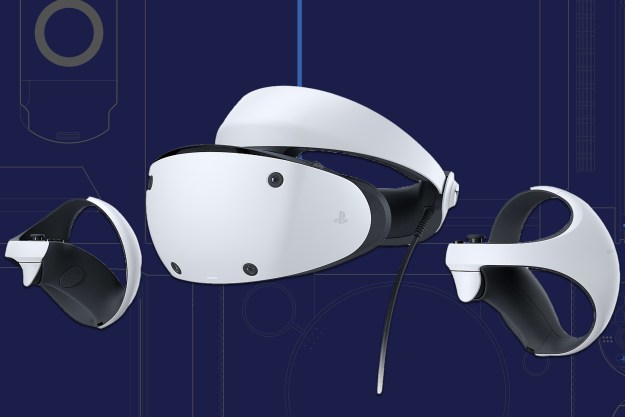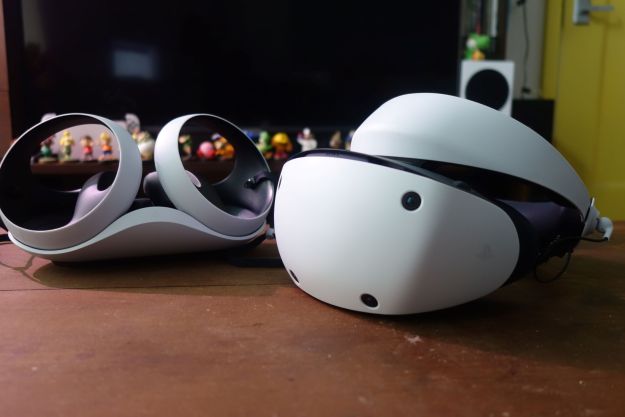Sony’s reveal of new PlayStation 5 details is straight out of a public relations playbook: The company said only enough to keep people talking. The official name is PlayStation 5 (though that was never in doubt). Ray-tracing support, previously hinted at, will be in hardware. The SSD will be fast. And the controller will have enhanced haptic feedback.
If none of that sounds surprising, you’re not alone. Gamers keeping tabs on new consoles no doubt expected much of what was revealed. There was, however, one breadcrumb that looks more intriguing than the rest, and it’s found buried in one paragraph of Wired’s exclusive.
“We don’t want the player to have to boot the game, see what’s up, boot the game, see what’s up,” lead architect Mark Cerny told Wired’s Peter Rubin.
Instead, the PlayStation 5 serves up a “set of joinable activities in real time.” Players can even see the in-game rewards they’ll receive. If Cerny’s statement is as broad is it sounds, it’s a literal game-changer.
This is your new Destiny
Think about how you play Destiny 2 today.
Want to do a strike? First, load the game. Then log in, which, though simple, is another step and adds a few seconds. Now you’ll come to the director, where you navigate to the menu to either join your friends or queue for a strike solo. If you do join your friends, then the group leader queues for a strike.
Each step is simple but, together, they take time. Joining a strike in Destiny 2 can take five minutes (or more) from the moment your butt is on the couch, even if you and all your friends are geared up and ready to play. The same problem faces many other activities, from player-on-player action in the Crucibal, to bite-sized patrols and public events.

Cerny’s statement suggests that, with the PlayStation 5, those steps can be ignored. All you’d have to do is select an activity from a menu on the console’s dashboard and press the launch button. You could be playing in a minute instead of five.
That’s a big deal.
Gaming is entertainment, and entertainment benefits from instant gratification. Most people just want to play. The technical details surrounding the game are unpleasant necessities. No one loves to see a login screen, even though it must exist.
The PlayStation 5 could change that. As someone who’s more than once rage-quit on a game purely because a queue was too long, this idea sounds wonderful.
The dark side of gratification
There’s a potential downside to this change, however, and it has everything to do with monetization.
The video game industry has struggled to monetize its games without victimizing players. The allure of unique awards and content can be hard for people with a gambling problem to resist. Anything that lowers the barrier between the player and a game’s rewards has the potential to make this problem worse.
Destiny 2 has struggled with controversial monetization. That includes expensive cosmetic items, exclusive content for certain consoles, and loot boxes. Bungie recently clarified that cosmetic rewards, which are often the game’s most coveted items, will mostly be store exclusives.

Let’s imagine where this could go. Bungie could develop exclusive instances that provide certain visual, or even gameplay, perks. These could provide shortcuts to other game content. Perhaps there’s a special version of an instance that gives players exclusive perks. Or maybe Bungie decides not to enable certain shortcuts to game content for free, but instead locks them behind content that’s purchased.
Cerny’s also told Wired that players can see not just activities from the dashboard, but also “what rewards you might receive for completing them.” Bungie could create missions with big rewards that are visible on the dashboard but then lock them behind paid DLC or other monetization.
Now replace Bungie with any other game developer or publisher, and I think you’ll start to see the problem. Instant gratification is a huge motivator. This feature could be an effective new tool to push players toward opening their wallets.
It’s a trend
Is this good? Or is it bad?
I don’t think it’s either, but it will absolutely change the way you play games. Some changes will be for the better. Some might be annoying. We’ll have to see how it plays out.
Whatever you think of it, though, make no mistake — this is a trend. A “set of joinable activities in real time” is not that different from the real-time features Google believes will be critical for Stadia. Its cloud gaming platform will let players jump into save points shared by other players or join in on livestreams viewed on YouTube. The PlayStation 5’s feature is a bit different, but it’s aimed at the same target.
The game industry wants gaming to be easier. It’s a sensible, even admirable, goal that will have consequences. Fast travel, already despised by those who prefer games with expansive, organic game worlds, will be replaced by instant-on menus. Some titles may drop open worlds entirely, opting instead for chains of interconnected instances that can load quickly from a menu.
I’m certain we’ll see game genres morph to accommodate this trend. Imagine a livestream gameshow you can instantly join through Stadia, or a quick-hit action RPG that loads in seconds and shoots 10-minute hits of loot-filled gameplay straight to your jugular.
That, and more, will be common as load times drop to seconds and online connectivity becomes the default. I can’t wait to see what’s possible. And I cringe at how that possibility could be twisted.
I reached out to Sony for details on the dashboards’ implementation. Sony wasn’t able to provide comment before this article was published. I’ll update this article if the company reveals more.
Editors' Recommendations
- If you’re not using PlayStation Stars, you’re missing out
- I was a PlayStation Portal hater. Now it’s one of my go-to gaming devices
- This PS5 Pro leak reveals a massive jump in performance
- Don’t skip over our 5 favorite minigames in Final Fantasy VII Rebirth
- You need to try PlayStation VR2’s most psychedelic game yet


